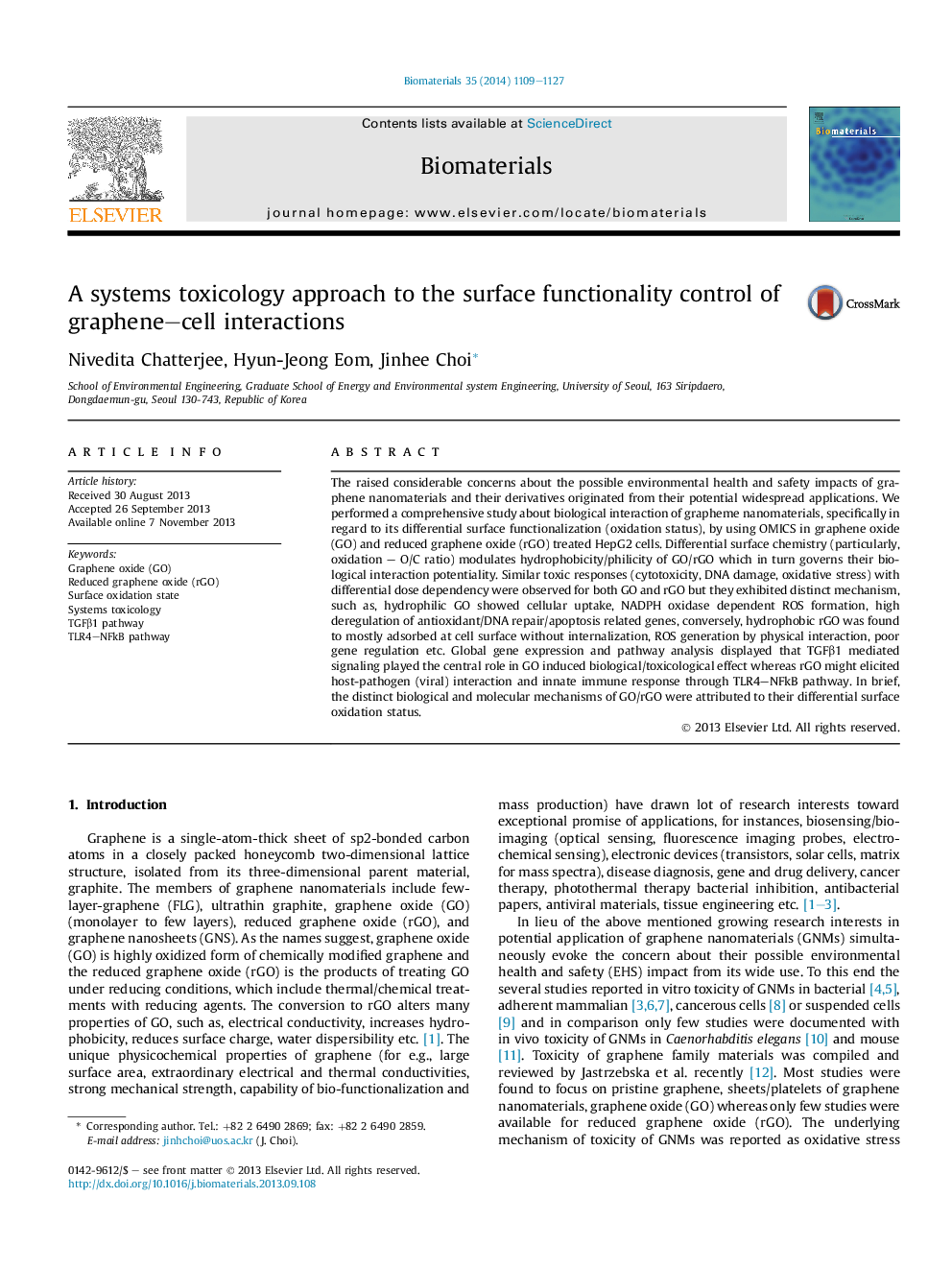| Article ID | Journal | Published Year | Pages | File Type |
|---|---|---|---|---|
| 10228579 | Biomaterials | 2014 | 19 Pages |
Abstract
The raised considerable concerns about the possible environmental health and safety impacts of graphene nanomaterials and their derivatives originated from their potential widespread applications. We performed a comprehensive study about biological interaction of grapheme nanomaterials, specifically in regard to its differential surface functionalization (oxidation status), by using OMICS in graphene oxide (GO) and reduced graphene oxide (rGO) treated HepG2 cells. Differential surface chemistry (particularly, oxidation - O/C ratio) modulates hydrophobicity/philicity of GO/rGO which in turn governs their biological interaction potentiality. Similar toxic responses (cytotoxicity, DNA damage, oxidative stress) with differential dose dependency were observed for both GO and rGO but they exhibited distinct mechanism, such as, hydrophilic GO showed cellular uptake, NADPH oxidase dependent ROS formation, high deregulation of antioxidant/DNA repair/apoptosis related genes, conversely, hydrophobic rGO was found to mostly adsorbed at cell surface without internalization, ROS generation by physical interaction, poor gene regulation etc. Global gene expression and pathway analysis displayed that TGFβ1 mediated signaling played the central role in GO induced biological/toxicological effect whereas rGO might elicited host-pathogen (viral) interaction and innate immune response through TLR4-NFkB pathway. In brief, the distinct biological and molecular mechanisms of GO/rGO were attributed to their differential surface oxidation status.
Related Topics
Physical Sciences and Engineering
Chemical Engineering
Bioengineering
Authors
Nivedita Chatterjee, Hyun-Jeong Eom, Jinhee Choi,
